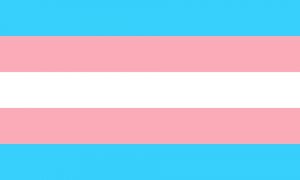BR: You introduce the term “genetic strangers.” Can you define it for us, and explain how the families you studied embodied the term?
RH: We use the term ‘genetic strangers’ to describe people who share genes but who do not know one other … or even that the other exists. Genetic strangers are not relatives until a relationship is created. In fact, the core of the book is about whether and how strangers become relatives … and what happens to the meaning of family as a result.
In Random Families we refer to “donors, donor siblings and their families as ‘genetic strangers’ as a way to bind together something that usually connotes familiarity with something that symbolizes the opposite.” In the conventional heteronormative view, there is nothing more intimate than blood ties (i.e., shared genes). As single mothers and two-mom families joined the ranks of heterosexual parents who needed gametes to create a baby, those gametes often came from commercial sperm banks. The rise in markets for sperm and/or eggs means that more children share half their DNA with strangers.
The donor sibling networks we discuss in Random Families are modern strangers in a modern world — a world in which we interact with people we do not know well and may never have met before. Think about the Internet, especially Facebook groups or our own FB page that often includes people with whom we do not share space or time. The internet extends our acceptance of strangers whom we believe can provide us with a sense of connectedness or belonging, information and perhaps even intimacy. Donor sibling networks are a special case of people who may have randomly purchased the same donor; and after finding each other they might try to turn that strangeness into some form of kinship.
BR: According to your evidence, there are distinct eras in the history of the emergence of families connected by donor siblings. Can you identify these eras and how the experience of creating familial networks differs between them?
RH: Those are important questions because they point again to the distinction between stranger and relative. The first successful pregnancy with donor sperm began nearly six decades ago. But because donors were anonymous it didn’t make sense to talk about networks, even if multiple offspring were probably created in the earliest days. It wasn’t until much later that this made sense, particularly with the rise of the internet, which increased the availability of information and made it much easier for people to connect by means of Facebook and web sites such as Ancestry.com and 23andme, for example.
That’s why we distinguish different eras in donor-conceived networks based on the kind of genetic information available and by the ease of access to that information.
The first era of donor-conceived networks begins in the 1980s with lesbian couples and single mothers (straight or queer) who pioneered the formation of these families by using smaller commercial sperm banks in two important hubs – San Francisco and Boston. In contrast to the anonymous sperm marketed by the large, often national, sperm banks, these smaller banks offered identity-release donors. The parents felt that nurture – how they raised their children – would trump nature. They told their child he or she had a “father” whom they could meet when they turned 18. If at age 18 children wanted to connect, they could ask the bank to relay that desire to the donor. Surprisingly, it was usually the donor who fostered connections between their various offspring as they came forward. The child almost always expanded family to include these new relatives and conventional terms, such as father and brother/sister were also likely to be used. The donor was a good guy who kept his promise and arrived to meet his genetic offspring. The offspring met as a sort of afterthought.
The second era begins in the 1990s with parents who purchased anonymous donor sperm only to have anonymity stripped away with the growth of the internet and online networks. These nuclear families fully expected to raise their children with disclosures about the sperm donors, but they expected that family lineage would come from the parent(s) and not through paternal (donor) kin. The growth of the internet and the ease with which people could access internet sites changed all of this. Registries emerged as independent sites and then banks offered these registries as opt-in features. Parents (for the most part mothers) were startled to learn about this possibility to connect with other families who shared their child’s genes. Parents would register and usually they did not discuss their decision to do this with their children. They wanted to check out these strangers who lived all over the country before telling their children. Once parents were satisfied, they told their children they had “half siblings.” Children were surprised. Sometimes these relationships moved offline to a face-to-face meeting and sometimes the children became close to these new siblings. Counting these networks as extended kin took time as these unscripted relationships slowly developed. Parents might have orchestrated those first “reunions” when children were adolescents or teens. In the book we compare two networks from this era. Both have anonymous donors; but the donor in one network decides to reveal his identity which represents a likely possibility. Moreover, the kids in these two networks react differently to meeting their donor siblings. As these networks expanded, intimacy between such a large group of children became problematic. Like other kinds of large organizations, the networks fragment into smaller groups that sometimes resemble high school cliques.
The third era of donor-conceived networks begins with children born after 2003. The distinguishing feature is that children born in this era would grow up with donor siblings as commonplace. These parents had toddlers when registries first began, and they connected early on with their child’s donor siblings. Unlike the earlier era when kids were surprised that they had donor siblings, these kids saw their half-siblings more like cousins who visited once or twice a year. Sometimes children formed close ties to one or two other children in the group. These networks are larger from the start (as more parents decide to locate a child’s half siblings). There are no large gatherings with all the members. Families are most likely to meet regionally with a smaller group.
Finally, we feature a network of younger parents whose children are under five and who knew about donor siblings when they purchased gametes. It is not the newness of the internet or registries that emerges among this group. Instead, these parents, whose children are too young to understand the idea of donors and donor siblings, question whether they can find a new kind of kinship organization. They don’t want to make assumptions about the relationships within the group and how their children might feel when they are older. They hope that by providing memories of gatherings their children will want to define those relationship with each other in the future or, at the very least, they will have each other to talk to about being donor conceived. For these parents the donor sibling network is more like other interest groups or forums they belong to where they can share information that they hope will benefit their child. This new period (maybe not an era) represents kinship revisited.
Since consumer demand for identity release donors increased over these eras the people we interviewed with children born after 2000 are more likely to have this kind of donor. Yet, when the children eventually can have contact with their donor (if their child wants this) these last two networks imagine a donor who is willing to offer information. He is not the “father” who arrived in the late 1980s.
BR: In many of the narratives, you write about how individuals, and nuclear families, come to reassess the relative power of nature versus nurture in children’s development. Please explain how children come to think of nature versus nurture in their experiences as they met genetic family members.
RH¨ We made a point of interviewing children (ages 10 to 29) because we anticipated that at an early age they would have to puzzle through distinctions like nature versus nurture that are loaded with meaning for families, as well as for children.
But to be fair to the kids, it’s important to put “nature versus nurture” into context first. That is, for all the public discussion of genetics and all the information available about individual genetic makeup (e.g., from services like Ancestry.com and 23andme), there is huge ambiguity about the meaning of genes for parents, let alone for children. Even in the scientific community there is no consensus about the heritability of many human qualities – like intelligence, musical ability or sports. So, when we interviewed kids it was important for us to listen carefully to the way they gave meaning to genes.
In most instances, parents set the foundation for kids’ understanding of nature versus nurture, usually with their first conversations about a child’s origins or birth story. Donor is a hollow concept to a child. Parents fill in the concept, but always with reference to their preferred way of talking about family. A discussion about inherited traits and characteristics is how we locate children in a family system: “Your curly hair is from me, or musical ability from your grandmother.” If they have a donor’s profile, parents usually reference bits of information that factored into their selection of a donor (e.g., “He is an astronaut” or “wants to become a lawyer”, or he “reads a book a day” or “he likes mountain climbing”). Over time, parents and children collaborate in inventing both the donor and the child’s genetic inheritance.
However, for donor-conceived children nature versus nurture really becomes relevant – and complicated – when donor siblings are located. When half-siblings first meet, they quickly discover shared traits, starting with physical resemblances. It’s important to note that children who share a donor are primed to find similarities with their half-siblings. The experience is often powerful and, not surprisingly, talk about genes and heredity takes center stage.
Donor-conceived children described a real tension between nature and nurture – if not immediately, then over time as they transformed genetic strangers into relatives. Kids who had no siblings within their nuclear family often took great delight in meeting children who were like them, especially since their parents encouraged the contact. But even with parental encouragement some kids felt they should downplay the importance of genes – because putting genes at center stage implicitly distances them from the family they’ve always known. This is most pronounced in families with a non-genetic parent. On the other hand, they could not deny the fact of physical resemblance and the often- eerie feeling that occurred when they discovered unexpected similarities like sense of humor and musical ability.
With time and distance, a more nuanced view about nature and nurture seems to emerge. Kids assimilate the new information and arrive at workable definitions of siblinghood, for example. They make a point of preserving a central role for non-genetic parents, such as talking about deeply-ingrained preferences for food, music, or esoteric matters that they shared with their non-genetic parents. Talk about genes is tempered by a more sophisticated understanding that they can belong to their parents while acknowledging that they share some things with a donor and their donor siblings.
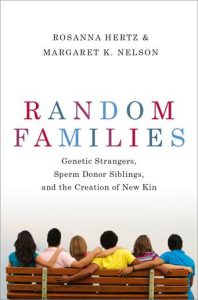

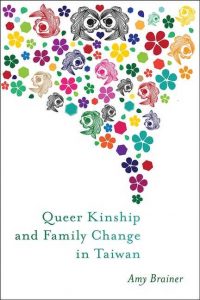
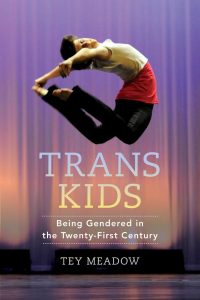
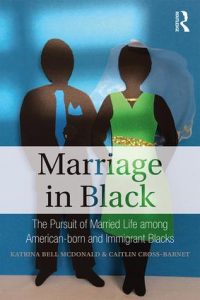
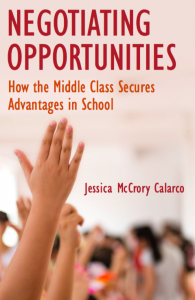 Jessica McCrory Calarco is an Assistant Professor of Sociology at Indiana University at Bloomington and recently published the book
Jessica McCrory Calarco is an Assistant Professor of Sociology at Indiana University at Bloomington and recently published the book 
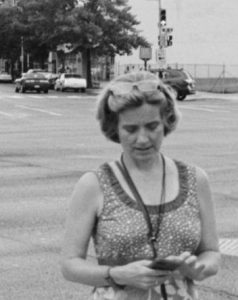
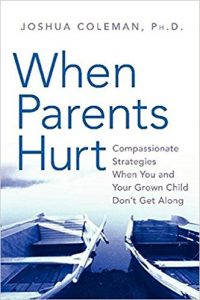 grown children expect to be friends. Many have that experience. But, remarkably,
grown children expect to be friends. Many have that experience. But, remarkably, 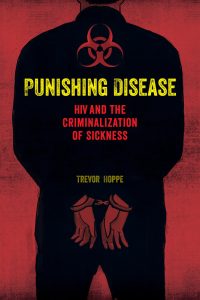 Trevor Hoppe is an Assistant Professor of Sociology at SUNY-Albany, and recently published the book
Trevor Hoppe is an Assistant Professor of Sociology at SUNY-Albany, and recently published the book 